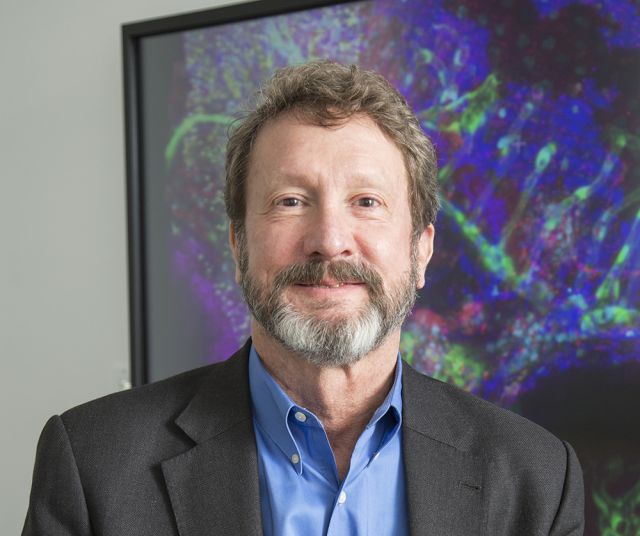Scott Fraser, Ph.D. Provost Professor, University of Southern California, Eavesdropping on biological processes with multimodal multiplex microscopy

Seminar
This BIOE 225 Seminar will be hosted in person.
Speaker:
Scott Fraser, Ph.D.
Provost Professor
Department of Biological Sciences & Biomedical Engineering
University of Southern California
Faculty Host
Arnab Mukherjee
Eavesdropping on biological processes with multimodal multiplex microscopy
Abstract:
Imaging of living specimens can animate the wealth of high-throughput molecular data to better understand complex events ranging from embryonic development to disease processes. We are advancing this approach despite the unavoidable tradeoffs - between spatial & temporal resolution, field of view, limited photon budget - by constructing faster and more efficient light sheet microscopes that maintain subcellular resolution.
Our two-photon light-sheet microscope combines the deep penetration of two-photon microscopy and the speed of light sheet microscopy to generate images with more than 10x improved imaging speed & sensitivity. Two-photon excitation light is far less scattered, permitting subcellular resolution to be maintained better than conventional light sheet microscopes, resulting in 4D (3D over time) cell and molecular imaging with sufficient speed and resolution to unambiguous trace cell lineages, movements and signals in intact systems.
To increase the 5th Dimension (# of simultaneous labels), we are refining new multispectral image analysis tools that exceed the performance of our previous work on Linear Unmixing by orders of magnitude in speed, error propagation and accuracy. Novel denoising strategies permit imaging at far lower light levels, yielding rapid and unambiguous analyses without perturbing even fragile multiplex-labeled specimens.
Parallel refinements in label-free approaches extend imaging to patient-derived tissues and even human subjects. The low concentrations of these intrinsic labels required us to refine fluorescence lifetime imaging (FLIM), and combine it with multispectral and advanced denoising tools, to perform intravital imaging in such challenging settings.
Combined, these imaging and analysis tools offer the multi-dimensional imaging required to follow key events in intact systems as they take place, and allow us to use noise and variance as experimental tools rather than experimental limitations.
Bio:
Professor Scott E. Fraser has a long-standing commitment to quantitative biology, applying the tools of chemistry, engineering and physics to problems in biology and medicine. His personal research centers on imaging and molecular analyses of intact biological systems, with an emphasis on early development, organogenesis, and medical diagnostics. After training in physics (BS, Harvey Mudd College, 1976) and biophysics (PhD, Johns Hopkins University, 1979), he joined the faculty at UC Irvine, and rose through the ranks to become Chair of the Department of Physiology and Biophysics. In 1990 he moved to Caltech to serve as the Anna L. Rosen Professor of Biology, and the Director of the Biological Imaging Center. He is deeply committed to interdisciplinary training and translational research, having helped found the Caltech Brain Imaging Center and the Kavli Institute of Nanoscience, as well as serving as the Director of the Rosen Center for Biological Engineering. In Fall 2012, he moved to USC to take a Provost Professorship in the Dornsife College of Letters, Arts and Sciences, the Children’s Hospital Los Angeles, Keck School of Medicine and the Viterbi School of Engineering. He remains active in interdisciplinary research and serves as the Director of Science Initiatives for the USC campuses.